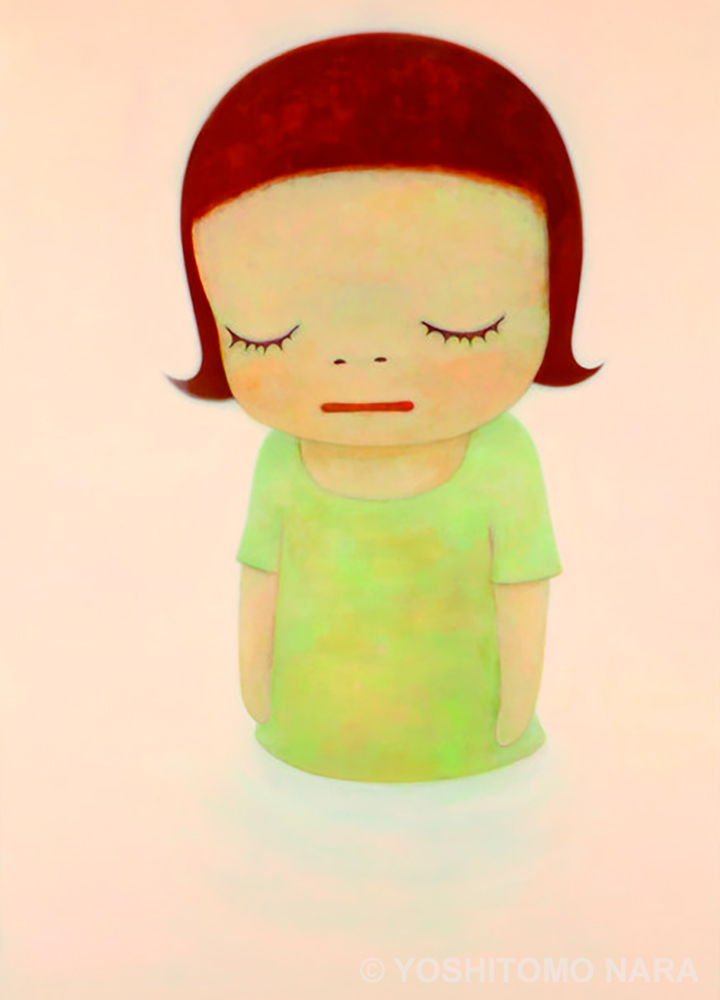After the Quake
“When something like an earthquake or a war causes total devastation, it can temporarily illuminate things that are usually kept in the dark. There are so many things we can learn from that. I’ve never experienced war, but I think the earthquake, tsunami, and nuclear accident played the same kind of role for me.”
Yoshitomo Nara
In the aftermath of the earthquake, Nara felt compelled to reassess the path he had followed to that point, in order to negotiate his present and future. In 2012, new paintings were exhibited at Yokohoma Museum of Art. They showed a move away from his standing figures to a close-up view of their faces: the frontal pose being like an ID photograph or a traditional portrait. When the children’s eyes are open, staring directly at the viewer, they are confronting, but the sideways looks and sense of hostility are gone, and their vulnerability is heightened. When their eyes are closed there is a suggestion of meditation, peace, and profound introspection. With no distractions from the outside world, it is an interior view—Nara describes this as seeing with the eyes of their heart.
Nara’s children had become increasingly ethereal, painted with a kaleidoscope of rich, fragmented touches of color. His methodical brushstrokes, superimposing layer upon layer of paint, revealed a new trajectory of formal experimentation for Nara, a move from the solid areas of color seen in earlier works to a new emphasis on the physical surface of the canvas and artistic tradition of asserting the mark of the artist.
These portraits are not representations of specific people. Instead, they are instruments through which Nara conveys his ideas and emotions. The children’s horizontal, closed mouths give little away—the previously pouting or slightly upturned lips, verging on a smile, are gone—but deep emotion is communicated through their tear-filled, often iridescent eyes.
Nara wants each viewer to have their imagination sparked by these images as the simplified compositions, where the backgrounds remain monochrome and neutral and motifs have disappeared, have no narrative thread. Instead, the faces should be scrutinized in order to read the complex, inner emotions of the subject, projected through their eyes and their aura, which draws us to the soul of the character, to the soul of Nara.


